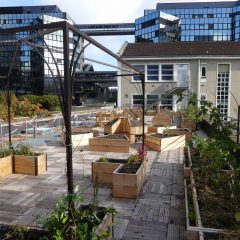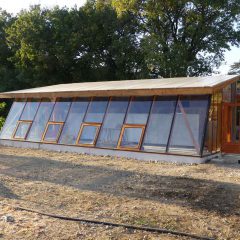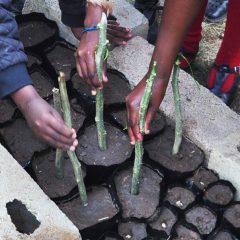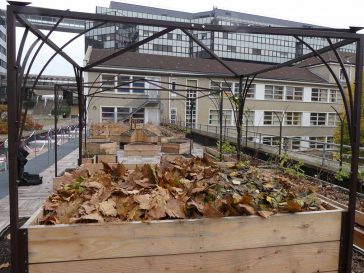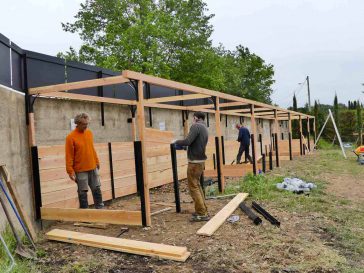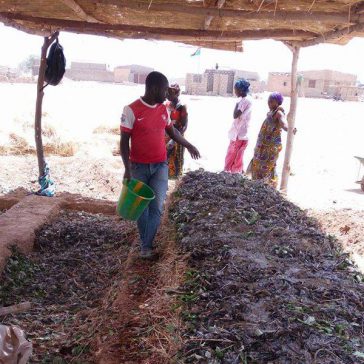Composting is the transformation of vegetable waste into a highly fertile soil that improves the structure and the fertility of the soil in which it is buried.
To make compost, we collect organic waste, from the kitchen and the garden, if they are small enough. We can also add some paper, cardboard, or paper towels if they do not have a trace of glue or ink.
In a few months, the different elements will decompose by natural aging, fermentation and also by digestion by the small bugs of the soil (earthworms, centipedes, clopores). These elements are compacted, reduced and become like fine soil, with a characteristic odor, which can be used to increase the fertility of the soil.
To be used, the compost must be “mature” (the decomposition is then finished). In fact, the internal life of compost consumes nitrogen, which is also necessary for plants. Applying unmatured compost is therefore a competition for crops in the search for nutrients.
You can very easily make compost yourself:
It is a smart way to use kitchen waste, and other organic waste from the garden.
You can put in the compost:
-All vegetable waste from the kitchen: vegetable peelings and other natural waste but no cooked meat, fish or cheese
-All organic waste from the garden if they are small enought (cut grass, faded flowers, dead leaves)
It is better to avoid:
– Citrus because their skin is often treated with chemicals (unless they are organic).
– Some leaves that decompose too slowly, such as laurel for example, or coniferous spines that are too acidic.
There are servral ways to put a compost in place an to ensure organic decomposition.
Household compost :
In an airy almost sealed tank, you will put small sized organic waste and leave it there for nature to do it’s job. It is the internal temperature that helps the developement of organisms that can transform the waste. In winter, the life of the compost is slowed down, but to avoid a too great drop in the internal temperature it is wise to cover the pile of compost. In the spring, the life of the compost is awakened by exposure to the soft heat of the sun. It must also be stirred to aerate it. However in summer it is necessary to avoid exposing the compost to the full sun because it would dry out. The compost must remain moist but not soggy.
Vermicomposting :
Vermicomposting is a technique that uses the biological activity of specific earthworms to convert organic waste into a quality compost. Vermicomposting allows:
• to reduce the amount of waste to be collected, transported and incinerated,
• to exploit organic waste free and in complete autonomy,
• to produce 100% natural and free compost and fertilizer,
• to reproduce the natural cycle of organic matter, since your waste will allow to nourish other plants …
Vermicomposting is done using a vermicomposter, which can either be purchased or manufactured by yourself. The compost worms placed inside the vermicomposter will feed on organic waste and transform it into compost.
The worm compost is generally composed of several elements. Each tray, or floor has several holes allowing the worms to go up or down from one to the other. Moreover, the aeration ensures a good decomposition and the survival of the worms.

